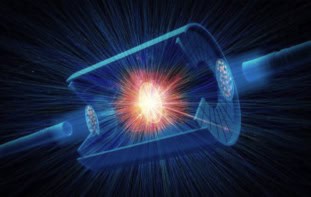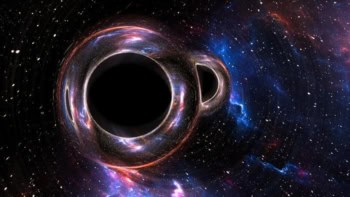Maximum-energy collisions will take place at the Large Hadron Collider (LHC) only after 2010.
Following the recommendations of LHC staff given at a workshop last week in Chamonix, France, CERN management has decided upon a restart schedule that will see the accelerator collide protons at record energies of 10 TeV towards the end of this year. However, collisions at the maximum collision energy of 14 TeV will have to wait until at least 2011.
CERN says that it has made the decision to ensure that there is enough data produced next year for theorists to search for new physics.
“The schedule we have now is without a doubt the best for the LHC and for the physicists waiting for the data,” said CERN director general Rolf Heuer in a prepared statement. “It is cautious, ensuring that all the necessary work is done on the LHC before we start-up, yet it allows physics research to begin this year.”
Now there is cautious but real optimism for the start-up. There is also great belief
Steve Myers, CERN
The schedule specifies that the LHC will have protons re-enter its ring at the end of September — six weeks later than previously estimated — and will see its first collisions a month later. It will operate through winter, perhaps without stopping for any of the usual four-month maintenance period, while working up to 10 TeV. During this time staff will also try injecting lead ions into the rest of CERN’s accelerator complex, which feeds the LHC. This will open up the possibility of ion-ion collisions in late 2010.
Real optimism
The LHC circulated its first protons on 10 September last year to a global audience, but its commissioning was brought to an abrupt halt nine days later when an electrical fault caused a huge magnet “quench” which evaporated some 6 tonnes of liquid helium into the underground tunnel. The force of the helium leak was such that it broke anchors in the concrete floor and ruptured connections between the magnets.
Since then CERN has been assessing the LHC’s safety and conducting repairs, which could total as much as CHF 40m (£23m). The repairs include the replacement of 53 magnets, the installation of additional pressure-relief valves, and the laying of hundreds of kilometres of new cable to monitor electrical resistance in an improved “early warning” system.
CERN says that the improved early-warning system will be in place before the LHC’s restart. However, the lab also says that it has identified two more “suspect” connections, which are being addressed.
“For the three golden days [after 10 September] the atmospheric was electric,” Steve Myers, CERN’s director of accelerators and the chair of the Chamonix group, told physicsworld.com. “Immediately afterwards there was disappointment and deception. Now there is cautious but real optimism for the start-up. There is also great belief.”



